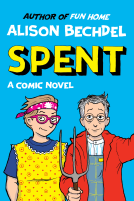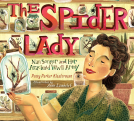
Engineering for Cats
Better the Life of Your Pet with10 Cat-Approved Projects
by Mac Delaney
This title was previously available on NetGalley and is now archived.
Send NetGalley books directly to your Kindle or Kindle app
1
To read on a Kindle or Kindle app, please add kindle@netgalley.com as an approved email address to receive files in your Amazon account. Click here for step-by-step instructions.
2
Also find your Kindle email address within your Amazon account, and enter it here.
Pub Date Aug 21 2018 | Archive Date Jul 24 2018
Talking about this book? Use #EngineeringForCats #NetGalley. More hashtag tips!
Description
Sure, your cat cleans itself, uses a litter box, and is happy to pitch in by ridding your basement of the occasional unwanted rodent. But she is also a barely domesticated wild animal whose compulsions might include shredding upholstery, knocking over plants, and trying to dominate the “territory” you call home. How to accommodate your pet’s feral instincts while reducing these problem areas in your relationship? Through engineering! Conceived by aerospace engineer Mac Delaney, here are ten ingenious DIY projects that address the quirks of cat behavior head-on, with results that will help both your cat and you to live happily—together—ever after.
DIY projects include:
cat shelf
drinking fountain
cat cave
scratcher
bunk beds
treat slot machine
cat door
litter box cabinet
cat wheel
Available Editions
| EDITION | Other Format |
| ISBN | 9780761189909 |
| PRICE | $14.95 (USD) |
| PAGES | 288 |
Featured Reviews
Coming from the Workman Publishing Group, Engineering for Cats by Mac Delaney will be available on August 7, 2018.
Review:
The introduction for Engineering for Cats by Mac Delaney (no relation) is as clever and charming as you can imagine. A project engineer engaged by the project manager in how to build a better mousetrap leads them to determine that all they've "invented" is the cat. Since they can't reinvent cats, they decide the thing to do is build projects that make cats happier during their cohabitation with humans.
"The projects in this book can help resolve behavioral issues and make your cats happier, but they are unlikely to change their overall personality."
The author includes sections on each project on engineering fundamentals which he admits you could skip over and head straight to the projects, but given the humorous delivery, I say read through it. He begins by explaining the common mistake about what is meant by "measure twice, but once." I won't spoil it for you.
In my own experiences as a cat companion, I've noticed that store-bought cat trees are designed for tiny cats and kittens. Gus is an average size, 13 pound domestic short hair. He's not even a huge Maine Coon. Yet, Gus often has his legs falling off the edges of a tower or he can only sit upright prim and proper on the platforms. Scalability is lacking in store-bought cat furniture. Engineering for Cats will help you solve that problem especially since the illustrated cats are cute and based on Delaney's seventeen- and twenty-pound cats. Not going to lie, there's some algebra in this book. I had to repeat algebra a few times and I think my professor passed me out of kindness and desire to get me out of his class.
Each project is rated with difficulty level and approximate costs for the build. There's great advice about why you would want to build something specifically for a cat when there's something available on the market that's not for cats but seems like it could work. Example given: a simple shelf. A simple bookshelf may be able to hold twenty pounds of books, but that's a "static load," meaning books don't move around like cats do. A cat shelf needs to be able to support a cat leaning more on one end when it lands and leaping off an edge unlike books. If your books do that, call some paranormal investigators. The difficulty level slightly increases from a basic flat shelf to curved and carpeted shelves.
Estimated costs are also included and usually options are given for how costs may vary. Some projects like the basic cat scratching post are intended to be constructed out of leftover materials you might have in your garage or scavenge from a neighbor's home construction leftovers (maybe ask before dumpster diving though).
The illustrated cats certainly look pleased with the results. If you can't trust illustrated cats, who can you trust?
Honestly, I prefer the wooden pieces of cat furniture. The PVC pipe assemblies don't really go with my personal taste in decor. I suppose if you're a plumber you might think PVC cat furniture is super duper awesome. One of the best wood projects in this book is the litter box cupboard. What makes it unique is that there are simple hooks on the outside marked with the days of the week and a token that's moved from hook to hook daily after scooping. If you have kids who are assigned chores this is probably a fantastic feature akin to public toilets having a sign-out sheet for the cleaners noting when the last cleaning was.
The final project is constructing a cat wheel. Cat wheels are a huge trend right now. Certain indoor cats have a ton of energy that they need to expend and their human companions can't always play with them enough. I don't think Gus and Oliver would like a cat wheel especially since Gus is leash trained and gets to climb real trees. However, I have seen people like Jackson Galaxy (My Cat from Hell host) proclaim that cat wheels can solve behavior problems caused by bored cats. Constructing your own cat wheel will certainly provide a sense of accomplish and save you money. Hopefully your cat can understand your effort for the project and know how much you love them.
Readers who liked this book also liked:
Apsley Cherry-Garrard, Sarah Airriess
Biographies & Memoirs, Comics, Graphic Novels, Manga, History
George Takei; Steven Scott; Justin Eisinger
Biographies & Memoirs, Comics, Graphic Novels, Manga, Entertainment & Pop Culture


















